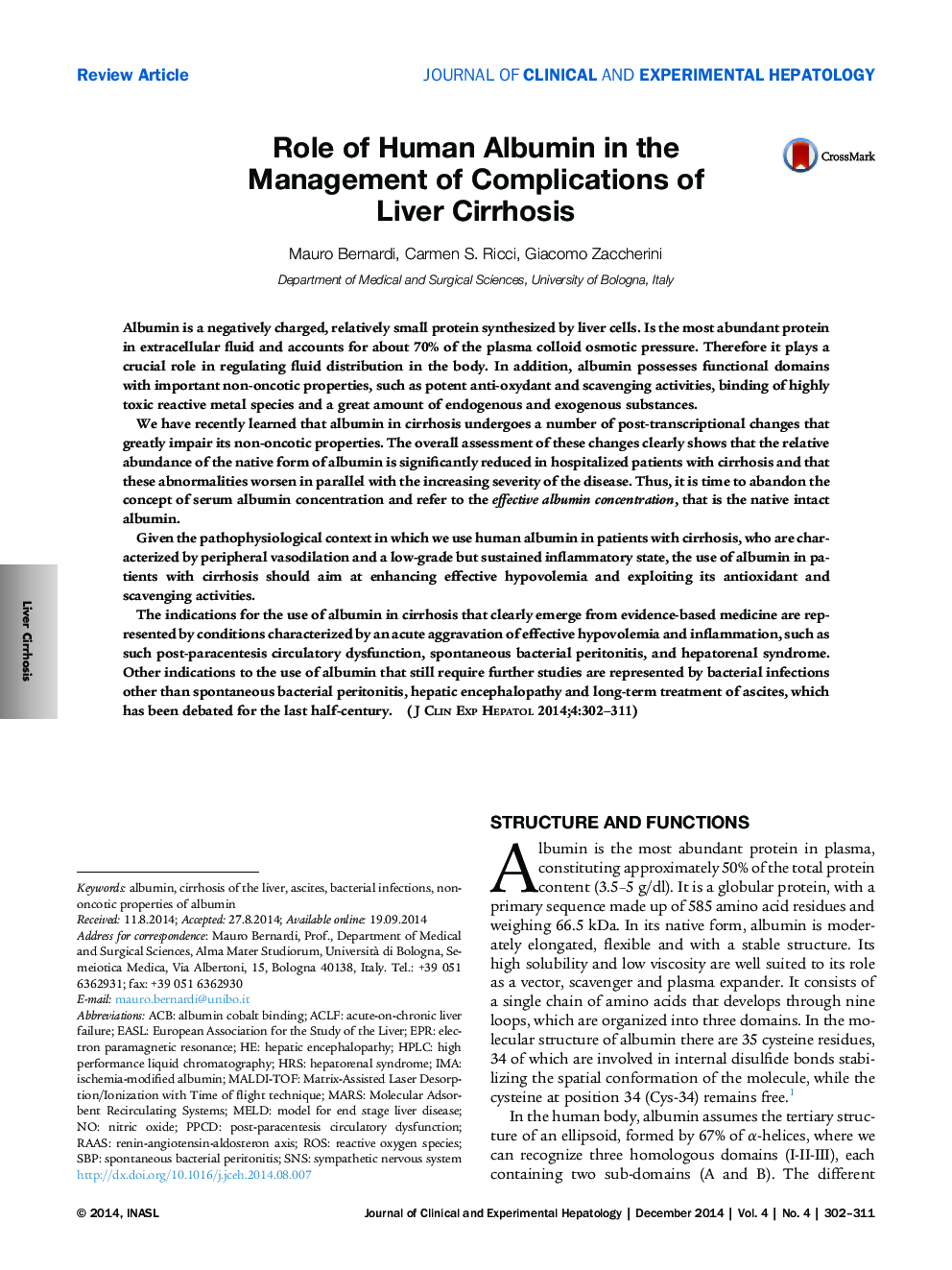| Article ID | Journal | Published Year | Pages | File Type |
|---|---|---|---|---|
| 3339247 | Journal of Clinical and Experimental Hepatology | 2014 | 10 Pages |
Albumin is a negatively charged, relatively small protein synthesized by liver cells. Is the most abundant protein in extracellular fluid and accounts for about 70% of the plasma colloid osmotic pressure. Therefore it plays a crucial role in regulating fluid distribution in the body. In addition, albumin possesses functional domains with important non-oncotic properties, such as potent anti-oxydant and scavenging activities, binding of highly toxic reactive metal species and a great amount of endogenous and exogenous substances.We have recently learned that albumin in cirrhosis undergoes a number of post-transcriptional changes that greatly impair its non-oncotic properties. The overall assessment of these changes clearly shows that the relative abundance of the native form of albumin is significantly reduced in hospitalized patients with cirrhosis and that these abnormalities worsen in parallel with the increasing severity of the disease. Thus, it is time to abandon the concept of serum albumin concentration and refer to the effective albumin concentration, that is the native intact albumin.Given the pathophysiological context in which we use human albumin in patients with cirrhosis, who are characterized by peripheral vasodilation and a low-grade but sustained inflammatory state, the use of albumin in patients with cirrhosis should aim at enhancing effective hypovolemia and exploiting its antioxidant and scavenging activities.The indications for the use of albumin in cirrhosis that clearly emerge from evidence-based medicine are represented by conditions characterized by an acute aggravation of effective hypovolemia and inflammation, such as such post-paracentesis circulatory dysfunction, spontaneous bacterial peritonitis, and hepatorenal syndrome. Other indications to the use of albumin that still require further studies are represented by bacterial infections other than spontaneous bacterial peritonitis, hepatic encephalopathy and long-term treatment of ascites, which has been debated for the last half-century.
